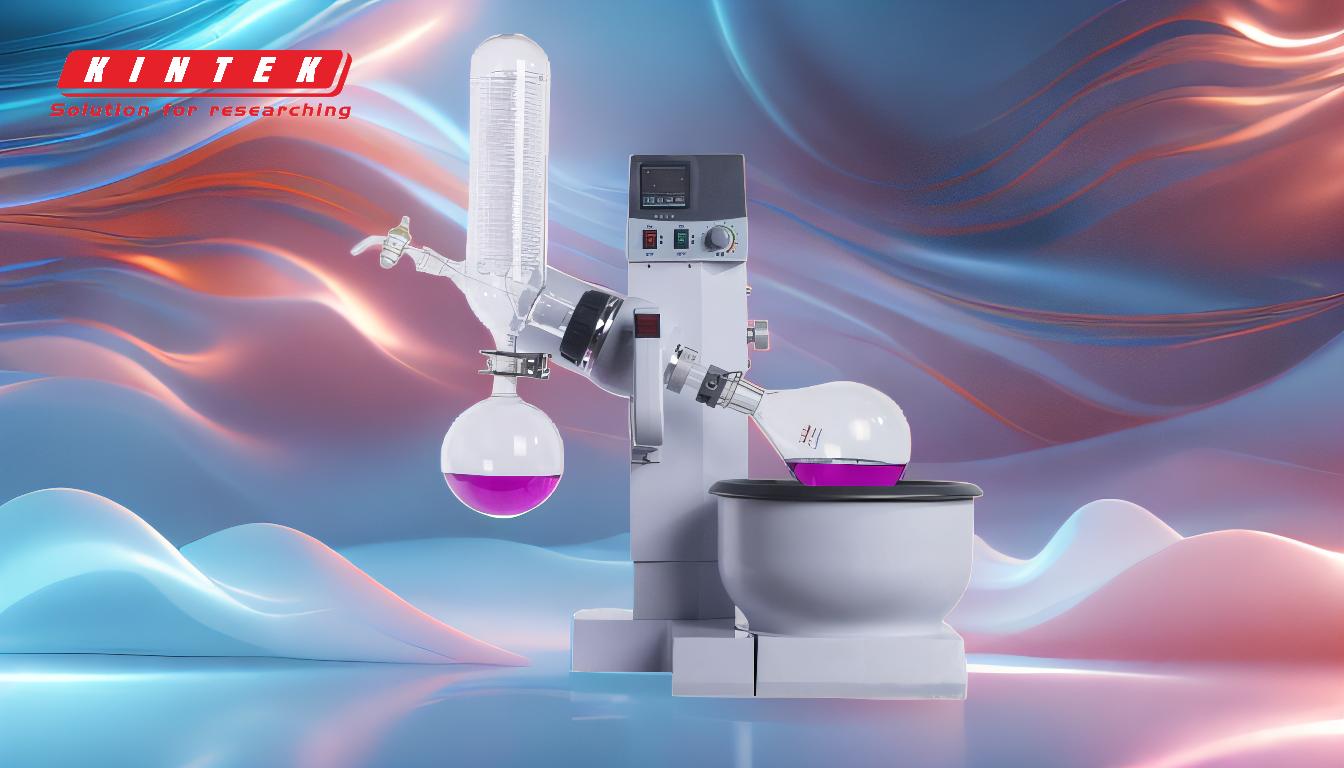Rotary evaporation is a laboratory technique used to efficiently remove solvents from samples by reducing the solvent's volume. This is achieved by distributing the solvent as a thin film across the interior of a rotating flask under reduced pressure and elevated temperature. The process involves several key steps: rotating the evaporation flask, condensing the evaporated solvent, and collecting the condensed liquid in a receiving flask. The setup requires careful preparation, including ensuring the condenser is cold, the vacuum system is operational, and the sample flask is securely attached. Rotary evaporation is widely used in chemical laboratories for its ability to gently and effectively remove solvents from a variety of materials, including organic, inorganic, and polymeric samples.
Key Points Explained:

-
Purpose of Rotary Evaporation:
- Rotary evaporation is primarily used to reduce the volume of a solvent in a sample. This is particularly useful in chemical laboratories where solvents need to be removed from less volatile substances without causing damage or degradation to the sample.
-
Process Overview:
- The process involves rotating a flask containing the sample under reduced pressure. This rotation creates a thin film of the solvent on the interior surface of the flask, which increases the surface area and promotes rapid evaporation.
- The evaporated solvent is then condensed back into a liquid form in a condenser and collected in a receiving flask.
-
Key Components:
- Evaporation Flask: The flask that holds the sample and is rotated to create a thin film of solvent.
- Condenser: The component where the evaporated solvent is cooled and condensed back into a liquid.
- Receiving Flask: The container where the condensed solvent is collected.
- Vacuum Pump: Ensures the system operates under reduced pressure, which lowers the boiling point of the solvent and facilitates faster evaporation.
-
Operating Steps:
- Preparation: Ensure the condenser is cold (often by filling it with ice), the vacuum pump is ready, and the sample flask is securely attached.
- Rotation: Start rotating the flask at a medium speed to create an even coating of the solvent on the flask's interior.
- Vacuum Application: Gradually increase the vacuum until condensation or bubbling is observed.
- Heating: If necessary, lower the flask into a heated water bath to further promote evaporation.
- Collection: Collect the condensed solvent in the receiving flask.
- Completion: Once all the solvent has evaporated, stop the rotation and release the vacuum.
-
Setup Requirements:
- Aspirator Pump and Recirculating Water Bath: These must be filled with ice to ensure the condenser remains cold.
- Power Supply: Ensure the power strip is turned on and all equipment is properly plugged in.
- Bump Trap: This should be clean and dry to prevent contamination.
- Sample Flask: The sample should not fill more than half of the flask to prevent spillage during rotation.
- Secure Attachment: Use clamps or Keck clips to securely attach all glassware to prevent leaks or accidents.
-
Applications:
- Rotary evaporation is commonly used in chemical laboratories for the gentle and efficient removal of solvents from a wide range of materials, including organic compounds, inorganic substances, and polymers.
-
Advantages:
- Efficiency: The process is quick and efficient, especially for removing large volumes of solvent.
- Gentle: It is a gentle method that minimizes the risk of damaging sensitive samples.
- Versatility: It can be used with a variety of solvents and sample types.
-
Safety Considerations:
- Vacuum Pressure: Proper handling of the vacuum system is crucial to avoid implosion or explosion risks.
- Temperature Control: Careful control of the water bath temperature is necessary to prevent overheating and potential sample degradation.
- Secure Setup: Ensuring all components are securely attached and the system is properly sealed is essential to prevent leaks or spills.
By following these steps and considerations, rotary evaporation can be effectively utilized in a laboratory setting to achieve the desired solvent removal efficiently and safely.
Summary Table:
| Aspect | Details |
|---|---|
| Purpose | Reduces solvent volume in samples without damaging sensitive materials. |
| Key Components | Evaporation flask, condenser, receiving flask, vacuum pump. |
| Operating Steps | Preparation, rotation, vacuum application, heating, collection, completion. |
| Applications | Organic, inorganic, and polymeric sample preparation. |
| Advantages | Efficient, gentle, and versatile for various solvents and samples. |
| Safety Considerations | Proper vacuum handling, temperature control, and secure setup required. |
Discover how rotary evaporation can optimize your lab processes—contact us today for expert advice!











